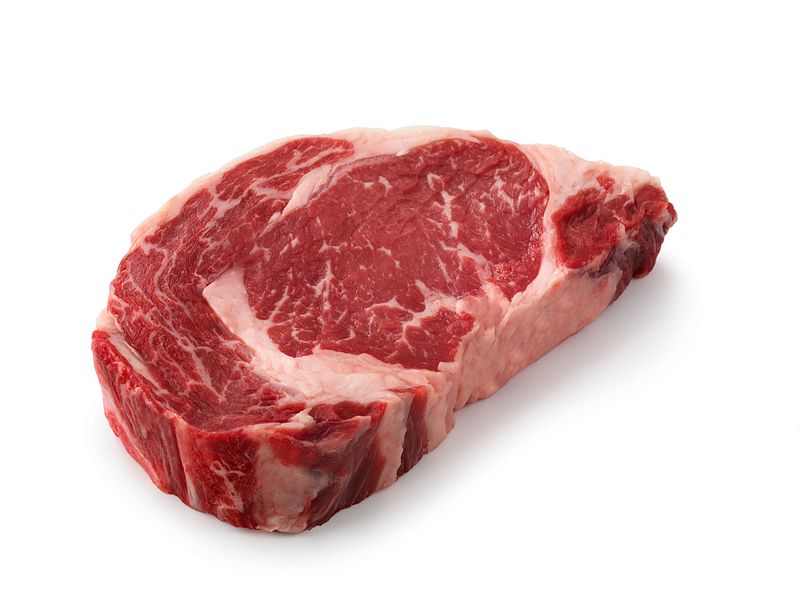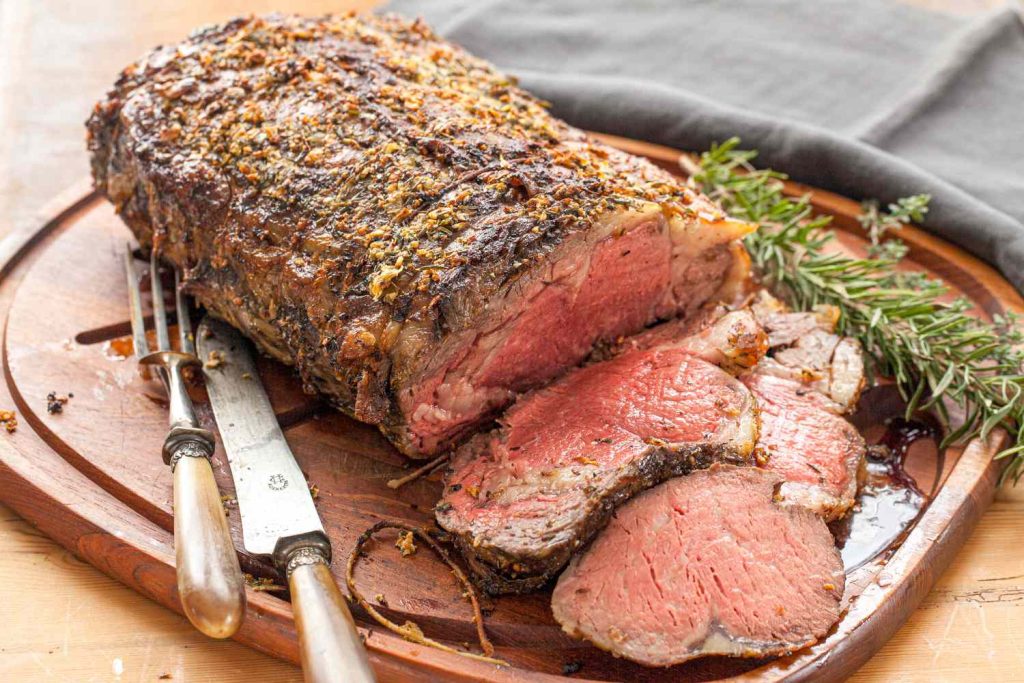Ribeye is one of the most popular cuts of beef, prized for its tenderness and rich flavor. It comes from the rib section of a cow and can be sold as a steak or ground. Ribeye is considered to be one of the highest quality cuts of beef – it’s well marbled with fat, which gives it an intense flavor and makes it juicy when cooked. Prime rib is a cut of beef taken from the prime rib section, which consists of ribs six through twelve on the side of beef. This cut is usually asked for by name when ordering at a restaurant, but it can also be referred to as a standing rib roast or bone-in rib roast. The Prime Rib cut comes from the back area near the shoulder, making it very tender and juicy due to its position near the loin muscle.

Ribeyes are often served as individual steaks that are perfect for grilling or roasting. They come in small or large sizes depending on how much meat you want to cook with each steak. Prime rib is typically served as a single large cut that can feed many people at once – they’re perfect for special occasions and holidays where you want to do something extra special! When cooking prime rib, it’s essential to remember that this cut needs low-heat cooking methods like slow roasting or braising to bring out its natural flavors and ensure it stays perfectly tender.
When shopping for these two cuts, look for ones with plenty of marbling on them – this will indicate higher quality meat and more flavor when you cook it. If possible, choose USDA-graded prime rib over choice grade – prime grade has more marbling throughout, ensuring maximum juiciness and flavor when cooked! When purchasing ribeye steaks, ensure they have an even thickness throughout so they’ll cook evenly no matter how you prepare them.

Prime rib is a type of roast beef that is renowned for its robust flavor and tender texture. It’s cut from the rib section of a cow, near the back, and usually consists of ribs six through twelve. This prime cut contains several muscle groups to give it a unique flavor. It’s widely known as one of the most desirable cuts for roasting due to its high marbling score and flavorful fat content.
When it comes to talking about the difference between prime rib and rib eye, there are quite a few factors that you should take into consideration. While these two cut the s of beef may look similar, there are some significant differences between them that you should know about.
What’s the difference between ribeye and prime rib?
The difference between ribeye and prime rib is based on their flavors from the way they are cooked. Prime ribs are seared and then roasted very slowly under low heat, while ribeyes are grilled quickly over high heat, making them more charred.
First, let’s start with the location of each cut from the cow. Prime rib comes from the back portion of the rib section, while the rib-eye is taken from the front side of the rib area. Prime rib has more fat and a thicker layer of fat which gives it its distinct flavor, while a ribeye is much leaner and has less fat but is still flavorful in its own right.
Another critical difference between prime rib and ribeye comes down to their marbling. Marbling is when intramuscular fat is visible in specks throughout the cut of meat, creating a marbled effect akin to marble stone. Prime ribs have an impressive amount of fat marbling, resulting in an incredibly juicy flavor and tender texture when cooked properly. On the other hand, Ribeye has less marbling and isn’t as juicy or flavorful as prime ribs when cooked at lower temperatures like roasting or grilling.
How these different cuts are prepared also plays an essential role in making them unique. When it comes to prime ribs, they are usually slow-roasted for long periods, which helps to ensure that all that beautiful fat remains intact during cooking so you can enjoy every bite! Ribeyes, on the other hand, are generally better served when quickly seared or grilled at high temperatures, which helps seal in those juices while still ensuring that you get the delicious flavor out of your cut of beef.
Finally, we come to taste! Both prime ribs and ribeyes offer a unique beefy flavor, but they differ slightly in that regard. Prime ribs tend to be somewhat sweeter because of all that extra fat, while Ribeyes have more intense beefy flavors since it has less marbling and retains more natural flavors from the meat itself. So depending on your preference and what kind of dish you’re preparing, either one could be suitable for you!
In summary, several critical differences between prime ribs and Ribeye steaks make them desirable for different dishes, preparation methods, and personal preferences for taste. If you’re looking for something sweet and juicy, go with a prime rib roast, whereas if you prefer intense beefy flavors, then opt for a nice Ribeye steak!
- Does Eating Spicy Chips Burn Calories? - November 10, 2023
- How Do They Make Spicy Chips in Factories? - October 27, 2023
- What Foods Cause Kidney Stones? - October 3, 2023
